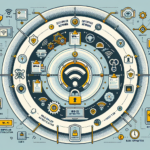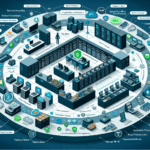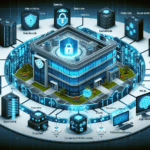Securing IT infrastructure for educational institutions is a critical responsibility, as these environments often involve sensitive data, shared networks, and a diverse range of users, including students, faculty, and administrators. Here are practical steps to improve security across IT infrastructure in educational institutions:
1. Network Security
- Segment the network: Use VLANs or other network segmentation techniques to separate student, faculty, administrative, and guest traffic to limit exposure in case of a breach.
- Implement firewalls and intrusion detection/prevention systems (IDS/IPS): Deploy next-generation firewalls and IDS/IPS to monitor and block malicious traffic.
- Secure Wi-Fi networks: Use WPA3 for secure wireless connections and limit access to trusted devices. Implement separate guest Wi-Fi networks for visitors.
- Zero Trust Architecture: Adopt a Zero Trust model where every device and user is verified before granting access.
2. Endpoint Security
- Deploy endpoint protection: Use endpoint detection and response (EDR) solutions to secure devices used by students, faculty, and staff.
- Patch management: Regularly update and patch operating systems, applications, and firmware to eliminate vulnerabilities.
- Device encryption: Ensure all devices storing sensitive information are encrypted to prevent unauthorized access.
- Mobile device management (MDM): Use MDM solutions to control and secure mobile devices, laptops, and tablets.
3. User Access and Authentication
- Implement strong authentication: Use multi-factor authentication (MFA) for all staff accounts and encourage students to use MFA where possible.
- Role-based access control (RBAC): Define roles and limit access to systems and data based on job requirements.
- Password management: Enforce strong password policies and encourage the use of password managers.
4. Data Protection
- Backup solutions: Implement regular backups of critical data and ensure backups are encrypted and stored offsite or in the cloud.
- Disaster recovery planning: Develop and test disaster recovery and business continuity plans to ensure rapid recovery from data loss or ransomware attacks.
- Data encryption: Encrypt sensitive data both at rest and in transit using protocols like TLS.
- Data classification: Identify and classify sensitive data, such as student records, research data, and financial information, and secure it accordingly.
5. Server and Virtualization Security
- Secure servers: Harden servers by disabling unused ports and services, using secure configurations, and regularly patching.
- Virtualization security: Use hypervisor-level security tools to protect virtualized environments. Ensure virtual machines are segmented and isolated.
- Restrict administrative access: Limit administrative access to servers and virtual environments to authorized personnel only.
6. Cloud Security
- Secure cloud resources: If the institution uses cloud services, ensure compliance with security best practices, including encryption, identity management, and auditing.
- Regular auditing and monitoring: Monitor cloud activity and access logs to identify potential anomalies.
- Vendor compliance: Verify that third-party cloud providers comply with educational data regulations like FERPA or GDPR.
7. Kubernetes and AI Security
- Kubernetes security: Secure Kubernetes clusters by enabling RBAC, using namespaces for isolation, and implementing network policies. Regularly scan container images for vulnerabilities.
- AI model protection: Ensure AI models and datasets are protected against tampering or theft by encrypting them and using secure storage solutions.
- GPU security: Secure GPU servers used for AI workloads by isolating workloads and monitoring for unauthorized access.
8. Awareness and Training
- Cybersecurity training: Provide regular security training to students, staff, and faculty to raise awareness about phishing, malware, and other threats.
- Simulated phishing tests: Conduct mock phishing campaigns to test awareness and improve response to suspicious emails.
- Security policies: Develop and enforce security policies, including acceptable use policies for institution-owned devices and resources.
9. Physical Security
- Restrict physical access: Use access control systems (e.g., RFID or biometric locks) to secure server rooms and data centers.
- Surveillance systems: Deploy security cameras to monitor critical areas.
- Environmental controls: Protect IT infrastructure from physical hazards like floods, fires, and overheating with appropriate safeguards.
10. Monitoring and Incident Response
- Log monitoring: Implement centralized logging and monitoring solutions to detect suspicious activities across the IT infrastructure.
- Security Information and Event Management (SIEM): Use SIEM systems to aggregate and analyze logs for proactive threat detection.
- Incident response plan: Develop and test a detailed incident response plan to quickly address security breaches and other emergencies.
11. Regulatory Compliance
- Understand regulations: Comply with data protection regulations such as FERPA (Family Educational Rights and Privacy Act), GDPR (General Data Protection Regulation), or HIPAA (Health Insurance Portability and Accountability Act) as applicable.
- Regular audits: Conduct internal and external audits to ensure compliance with security policies and regulations.
12. Collaboration with Vendors
- Secure third-party relationships: Vet vendors and third-party services for security practices, especially those handling sensitive data.
- Service-level agreements (SLAs): Include security requirements in SLAs to hold vendors accountable for protecting institutional data.
13. Utilize AI for Security
- AI-driven threat detection: Deploy AI and machine learning tools to identify unusual behavior and emerging threats.
- Automated response: Use AI for automated response to threats, such as isolating compromised devices or accounts.
By implementing these strategies, educational institutions can significantly reduce the risk of cyberattacks, protect sensitive data, and maintain a safe and secure IT environment for all users. Security is an ongoing process, so regular assessments and updates are essential to stay ahead of threats.



